Car, Truck/Utility Finalists Named
Filed under: Weekly test drives, Autos
By John Gilbert
The 2014 North American Car of the Year will be a near-exotic sports car, or a full-fledged sedan, with both costing up in the $60,000-$70,000 price range, or a high-economy compact sedan priced under $30,000 and closer to $20,000.
The Truck/Utility of the Year, similarly, will be either a luxury SUV in the over $50,000 category, a full-size pickup that can easily top $40,000, or a compact crossover with bold capability on and off road, priced well under $30,000.
All the preliminaries are settled, and the selection process to name the best for 2014 model year is speeding down the homestretch, so to speak. General Motors must be the numerical favorite with two of the three 2014 North American Car of the Year finalists, and it also has a major player in the companion North American Truck/Utility of the Year.
The Corvette Stingray is the redesigned sports car, and the Cadillac CTS sedan give GM two of the three finalists among cars, while the Chevrolet Silverado pickup gives GM one of the truck finalists. They are far from cinches, however, despite the continuing hopes for continuing success by GM.
The Corvette and the CTS both have a formidable contender in the Mazda3, a compact that costs half as much as either GM car and is capable of topping 40 miles per gallon with its holistic Skyactive engine-aerodynamic-design technology.
Same with the trucks, where the Silverado delivered on its long-awaited renovation, improving in every element of truck-building, and providing the tool needed to make up a clear deficit to rival pickups, but it faces a technically advanced Acura MDX as a thoroughly redesigned SUV, and a Jeep Cherokee compact crossover that is an entirely new vehicle with two new engines, dramatic styling, numerous high-tech features and a price that is about half the sticker of its two fellow finalists.
The jury of 50 auto journalists already has faced the pressure of reducing the original field down to workable groups of about a dozen each, then voted again to determine the top three vote-getting vehicles in each category to arrange the three finalists. The winners of the final vote will be announced at the Detroit International Auto Show in January.
Here’s a brief overview of the finalists, in alphabetical order:
Car of the Year
Cadillac CTS
The CTS and its hot-rod CTS-V model give Cadillac a solid footprint in the high-performing sporty sedan segment. With a front-engine/rear-drive layout, those in snowy regions would be wise to select the all-wheel-drive versions, which are available. The CTS4 comes with a turbocharged 2.0-liter 4-cylinder with 272 horsepower, while the standard CTS has the familiar 3.6-liter V6 with 321 horses, and the CTS V-Sport has the V6 with twin turbochargers producing 420 horsepower.
Main asset: The CTS is undoubtedly the best handling and best performing Cadillac ever, and it is aimed at challenging the mid-range sedans from BMW, Audi and Mercedes. Main limitation: Price point is also up there in BMW-Audi-Mercedes range.
Corvette Stingray
Redesigned body gives the Stingray a more exotic look, and the direct-injected power of 460 horsepower and 465 foot-pounds of torque from the revised 6.2-liter V8 are particularly appreciated with the 7-speed stick shift. The ‘Vette feels like a completely different — and mellower — performer with the automatic, almost like two different vehicles.
Main asset: Power, looks, handling and mid-20s mpg. Main limitation: A 2-seater may be a toy, but from $55,000-$75,000, it’s an expensive toy.
Mazda3
Mazda had to restrict the exhaust when it squeezed the first Skyactive engine into the existing Mazda3, while the new car has dramatic, eye-catching style and is designed around the full Skyactive treatment, with quick power and 40-plus mpg out of 13-1 compression ratio and regular gas. Mazda’s own manual and auto transmissions are slick 6-speeds, making the 155-hp 2.0 and the 185-hp 2.5 fours feel bigger than they are.
Main asset: A lot of style and technology in either sedan or hatch for under $30,000 and over 40 mpg. Main limitation: Perhaps none, for new benchmark in crowded compact segment.
Truck/Utility of the Year
Acura MDX
Third-generation of the larger of Acura’s two slick SUVs is bristling with technology, offering front-wheel or all-wheel versions with the 290-hp 3.5-liter V6, adding performance to a lighter and firmer MDX. Styling is highlighted by rows of bullet-shaped LEDs that serve as distinctive headlights. It challenges the class and tightness of the best German SUVs, with technical advancements that set new standards for any SUV.
Main asset: Performs beyond preconceived limits for family trucksters. Main limitation: Impressive technology comes at a price — think $50,000-plus.
Chevrolet Silverado
Changeover to all-new model is more than modest styling alterations suggest. It may not establish new benchmarks against Ford F150 or Ram, but it is clearly the best Chevy pickup ever. Nary an overhead camshaft among the 4.3 V6 (285 hp), 5.3 V8 (355 hp), or 6.2 V8 (420 hp), but Chevy engineers bring pushrods to life with direct injection and variable valve timing, and High Sierra model aims at the over-$45,000 bracket of luxury pickup buyers.
Main asset: Lighter but stronger frame, 6-speed auto may help approach highway EPA rating of 23 mpg. Main limitation: Best Chevy pickup ever still faces potent competition from upgraded Ram and F150.
Jeep Cherokee
Startling design makes all-new Cherokee different enough to be polarizing. First fwd platform for Jeep, with three different 4wd systems available. Console knob chooses auto/snow/sport/rock variations for new 2.4 MultiAir 4 (184 hp) or new 3.2 version of Pentastar V6 ((271 hp), and new ZF 9-speed transmission helps Cherokee conquer both extremes of Grand Cherokee on-road and Wrangler off-road.
Main asset: Great looks, interior, performance with 30-plus mpg capability, for $25,000-$30,000. Main limitation: Needs its agility so you can avoid owners of Liberty, Patriot and Compass, and maybe even Grand Cherokee and Wrangler; all will be bitterly envious.
KIA’s New-Age Beat Is Soul-ful
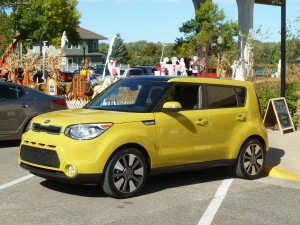
Bright new colors, more planted stance,interior upgrades, direct-injection engines improve Soul for 2014.
By John Gilbert
The hamsters are back, bobbing their heads in trendy rhythm as they avoid more humdrum vehicles that insist on sharing the roadways with the Kia Soul, and it’s a welcome and comforting cast that has become as trendy as the little square car itself. Almost.
Revised and upgraded engines, with gasoline direct-injection in both the base 1.6 and upgraded 2.0-liter 4-cylinders, plus revised and improved suspension systems for better stability and handling, and a stiffer platform with lighter and stronger body components, makes for a deceptively improved driving experience. The first Soul was neat and trendy; the 2014 model is neat, trendy, and significantly improved as a driver’s car.
Over its five-year lifespan, the Soul has become bigger than even Kia imagined, and the revised 2014 model proves Kia has finally maneuvered around to take advantage of its trendiness. For example, Kia picked Minneapolis as the site for introducing the new Soul, because Minneapolis seems to be the hot ticket in surveys of trendy places to live and visit. The introduction was held at the trendy Graves 601 Hotel, which is across the street from the legendary First Avenue nightclub made trendy as an enduring music venue by Prince, an iconic hometown hero.
Such symbolism, and the similar but longer-wider-more-refined car itself, indicates the remarkable popularity of the Soul can only increase with the new generation.
Kia can be excused for questioning the Soul’s identity, and even its own during its whirlwind rise in popularity, which pretty well parallels the lifespan of the Soul. For example, even company executives were unable to provide a satisfactory answer to whether it should be “Kia,” or “KIA,” because the corporate logo of the South Korean automaker is in all cap letters. Similarly, Kia seemed uncertain where it stood back in December of 2008, when it introduced the somewhat bizarre squarish subcompact called the Soul.
At that time, at a fancy hotel on the Miami coastline, the Soul had to share the spotlight with Britney Spears, who was shielded from the masses by an entourage of security forces and policemen trying to protect the budding media star. And we mean Ms. Spears, not the new little square car from Kia. However, in the five years since, it’s anybody’s guess which one’s identity has proven more popular and enduring, but that’s another story.
The original Soul introduction made media stars out of some weird little furry cartoonish hamsters, using them liberally as a bopping bunch of critters rhythmically driving along in traffic in the ad campaign. Obviously, the intent was to try to lure a younger batch of customers, but Kia seemed unsure and maybe even embarrassed that its tangential move might be going too far. At subsequent car introduction, officials even apologized, saying not to worry, there would be no more hamsters. I argued with company executives that the hamsters were not only a clever and memorable symbol, but the furry critters might be more iconic than the car itself. It took time, but the hamsters returned. Read more
Mazda3 for 2014: A Car for Any Year
By John Gilbert
The 2014 Mazda3 is a quick and agile compact that has a distinctive flair and the ability to change directions instantaneously — much like its namesake company.
In an automotive world dominated by companies large enough to resemble cruise ships, Mazda is more like a speedy runabout, able to change directions almost immediately. A year ago, Mazda introduced its CX-5, a newly engineered compact SUV holistically built from the ground up to Mazda’s just-revealed Skyactiv technology. The vehicle impressed all who drove it or looked at it, and it finished as runner-up to the revised Ram 1500 in the North American Truck/Utility of the Year competition.
That was just the tip of the Skyactiv iceberg, and the company has followed up with an impressive midsize sedan makeover for the Mazda6. And now it has produced the compact Mazda3.
The result is that both the Mazda3 and Mazda6 are among the candidates on the short list for the 2014 North American Car of the Year award. In a year where the candidate list is filled with flashy sports cars, luxury sedans, sporty sedans, and economy cars, and even its larger sibling, the Mazda3 concedes nothing, and its technology, appearance and performance mean it must be seriously considered by all jury members who drive it.
The full list of car candidates voted onto the short list is, in alphabetical order: the BMW 4 Series, Cadillac CTS, Chevrolet Corvette Stingray, Chevrolet Impala, Infiniti Q50, Jaguar F-Type, Kia Cadenza, Lexus IS, Mazda3, Mazda6, Mercedes-Benz CLA, and the Toyota Corolla. In addition, truck/utility candidates are: Acura MDX, BMW X5, Buick Encore, Chevrolet Silverado, GMC Sierra, Hyundai Santa Fe LWB, Jeep Cherokee, Kia Sorento, Land Rover Range Rover Sport, Nissan Rogue, Subaru Forester, and the Toyota Tundra.
Some of the car candidates are priced well over $50,000, and even over $75,000. That also has to work in favor of the Mazda3, which has a price range of $16,945 for the most basic I-SV model with a stick shift, and it ranges upward to $18,445 for the I-Sport, $19,595 for the I-Touring, and up to $22,745 for the I-Touring with technology and GT packages. The same models with the 2.0 and 6-speed automatic is about $1,000 more all the way up. The 2.5-liter engine comes only with the automatic, in either S-Touring at $24,595 or the S-GT at $25,995. Read more
The Cup, and rings, and valid inspiration
By John Gilbert
Last weekend was about as big as it can get for UMD athletics, with the football team winning an enormous Homecoming game, the women’s hockey team opening its season with two rousing victories over an outgunned Connecticut team, the volleyball team sweeping two more matches to defend its No. 2 national ranking, and the men’s hockey team extending the weekend to Monday night with an explosive 7-1 victory over Lakehead University.
The whole thing started, and was highlighted, by Norm Maciver’s presentation of the Stanley Cup. Maciver, who was a standout defenseman at UMD in the 1980s, is now the standout assistant general manager of the Chicago Blackhawks. Tradition has it that everybody on the winning team gets one day with the actual Stanley Cup, and Friday was Norm’s day with the sparkling silver chalice. He came home to Duluth which allowed him to visit his family and also to give Duluthians a chance to get up close and personal with the Stanley Cup.
Later he brought the Cup out to Heritage Arena where his son was practicing with Denfeld’s team, but the biggest presentation was at AMSOIL Arena. Before UMDs women faced Connecticut to open their nonconference series, Lord Stanley’s glorious cup stood at the west end of the concourse, while fans and interested spectators circled three-fourths of the entire concourse waiting for the chance to see and get photographed with the Cup.
The Cup is a wonderful spectacle on its own, with all the teams, and all their players, inscribed on ring after ring of space. Everyone knows what the Stanley Cup looks like, and everyone who earns the right to handle it can tell endless stories of weird things that have happened to the prized trophy while in the hands of individual players. But can anyone think of a trophy for professional baseball, football, basketball, or anything else, that approaches the Stanley Cup for class and elegance?
It’s the second Cup for the Hawks while Maciver has held a key position in player selection and assignment, and it’s typical of his class that he wouldn’t forget his adopted home.
Just as intriguing is the pair of rings Norm displayed, signifying the two Stanley Cup championships. Maciver put one on the ring fingers of either hand, and held them out. I kidded him that it was about as much weight-lifting as he is required to do these days to put both rings on and simply lift his hands.
Maciver stayed beyond his scheduled time with the Cup at AMSOIL, although he did finally have to take it and depart for other commitments and leave a few hundred fans in line. As he stood off to the side, talking with old friends, acquaintances and former teammates, I couldn’t help but ask Norm if he didn’t get a little weary of the long day of being such an attraction.
“No way,” he said. “How many times in anyone’s life do you get the chance to do something like this?
Typical. Norm Maciver could have put the Cup on his back deck and entertained his closest friends and family in a private day with the most impressive trophy in all of professional sports, but he never considered that. It was his time to share, and give back, the highest honor in hockey to Duluthians.
CUP RUNNETH OVER
Maybe the Stanley Cup gave special motivation to all the sports teams at Minnesota-Duluth, Maciver’s alma mater.
The women’s hockey team hammered Connecticut 7-0 on Friday and 6-1 on Saturday, amassing a 109-38 edge in shots in the two nonconference games. The Saturday victory was Shannon Miller’s 350th as the only coach of the Bulldogs. That free-scoring weekend may serve the Bulldogs well as they head for Grand Forks this weekend to face a North Dakota team that is ranked as a contender in the WCHA, while UMD is not.
On Saturday, the UMD football team broke from a rain-drenched 7-0 deficit in the second quarter to an amazing eruption of points and a 44-7 victory over a St. Cloud State team that looked like possibly the better team through the first half. Still ranked No. 11 in the nation among Division II teams, the Bulldogs will hit the road with renewed confidence in their running game and their defense and play Saturday at Minnesota State-Moorhead.
Immediately after the football game at Malosky Stadium Saturday, it was possible to go across the parking lot and inside the warmth of Romano Gym to watch the No. 2 ranked UMD volleyball team disassemble Winona State in three straight games for the Bulldogs second victory in as many nights. And then, there was time to dash down to AMSOIL Arena to catch the second UMD-Connecticut women’s hockey game.
That all-victorious weekend spilled over to Monday, when the UMD men’s hockey team opened its season with a game that went from a close encounter to a 7-1 blowout victory over Lakehead. That will pump up the Bulldogs for this weekend’s official season opener with a pair of nonconference games against Michigan Tech at AMSOIL. Tech, of course, was one of UMD’s first Division I rivals back in the 1960s, when UMD first moved up to D-I, and after such a long-standing rivalry, it’s great that the two schools can stay involved on a nonconference basis now that Tech remains in the WCHA and UMD splits for the great unknown of the National Collegiate Hockey Conference, where the Dogs were picked sixth out of eight teams.
Maybe Norm can find a way to come home every weekend to spark the Bulldogs teams. And he should bring the Cup and those rings.
Stranger from Japan proves familiar
By John Gilbert
It seems a long time ago, because it was, in the mid-1960s. I was just starting out as a sportswriter, and the University of Minnesota-Duluth was just starting to dabble in hockey at the Division I level. The Bulldogs, under coach Ralph Romano, played in the old Curling Club, and while their favorite rival was Minnesota, the big powers in college hockey were Michigan, Michigan Tech, North Dakota, and Denver.
Michigan won the NCAA hockey championship in 1964 with a collection of big, strong and talented players, and one little guy — a darting centerman named Mel Wakabayashi. In Duluth, we knew all about talented little centers, with Keith (Huffer) Christiansen directing virtually all of the meaningful offense the Bulldogs could muster. Huffer won a WCHA scoring title and became an All-American, shortly after Wakabayashi won a league scoring title and became an All-American.
It was easy to pay attention to Huffer’s play after college, because he played on the 1972 U.S. Olympic team as a naturalized citizen from Fort Frances, Ontario, and then got a chance to play for the Minnesota Fighting Saints in the World Hockey Association. It was not as easy to keep up with Mel Wakabayashi after college.
Fast forward 40-some years. Now it is 2013 and the University of Minnesota women’s hockey team opened its season with an interesting exhibition game against the National team from Japan. Now, Japan is not a threat to win any medals in men’s hockey, and seems farther removed from the comparatively fledgling women’s international hockey.
But Japan came to Duluth and acquitted itself well. Having tied St. Cloud State, and lost to the WCHA’s top two seeds — Minnesota (6-0) and Wisconsin (3-0), Japan jumped ahead of UMD when Rui Ukita scored on an unprotected rebound to open the game. UMD freshman Ashleigh Brykaliuk tied it 1-1 on a power play late in the opening period. Hanae Kuba scored for Japan at 13:33 of the second period, and it took another power play for Meghan Huertas, another UMD freshman, to score for a 2-2 tie.
Japan was quick, moved the puck better than the first-game-rusty Bulldogs, but UMD prevailed in the third period as Jamie Kenyon scored a hat trick, including an empty-net goal, and Katherine McGovern, yet another unknown UMD skater, also scored. UMD outshot Japan 43-13 for the game, but Japan’s goaltender, Azusa Nakaoku, was outstanding.
After the game, I scanned the Japan lineup in the AMSOIL Arena press box, hoping to see some name that might ignite a glimmer that I could find a brief communicator. At the bottom of the roster, it said: “Team Leader — Mel Wakabayashi.”
Could it be? I scoured the lower corridor of the arena and finally a team liaison fellow produced a short, stocky Japanese fellow, and pointed at him. I approached with some degree of caution and asked if he had ever played college hockey. “Yes,” he said. “At the University of Michigan.”
Bingo!
We had an interesting conversation, and I told him I had watched him play in the Curling Club, against UMD, and down at the old Williams Arena, against the Gophers, while writing for the college newspapers, and then for the Duluth News Tribune.
He was extremely humble, and gracious, and I had to drag his personal information out of him.
“Yes, I played against Huffer in Duluth once,” he said. “Yes, I led the league in scoring once. I played with Gordon Wilkie, Wilf Martin, and Tom Polonic at Michigan, and Bob Gray was our goaltender…”
I mentioned that Polonic, in particular, was a huge tough guy who made it to the NHL with his ruggedness. “Yes, I needed players like that,” he smiled. “We won the NCAA title in 1966. Beat Denver 6-2 in the finals.”
What about after college? The NHL didn’t give college players much of a chance. “I signed with the Red Wings after college in 1967,” he said. “They sent me to their Memphis farm team, but after a few games I got the chance to go to Japan and play in their six-team professional league.”
I insisted Walabayashi must have been the best player in Japan by a mile, and he insisted he wasn’t. But I’m pretty sure I’m right, even though he said there were a couple of good players from Northern Japan, and then his brother. Herb Wakabayashi was an All-American at Boston University.
“Herb changed to Japanese citizenship so he could play for Japan in the Sapporo Olympics,” said Mel. “I was the first foreigner to play in the Japanese league when I moved there in 1967. I played in that league until 1979, and I live in Tokyo now. I got my Japanese citizenship in 1994. You aren’t allowed to have dual citizenship in Japan, and I was a third-generation Japanese Canadian.”
After playing pro hockey in Japan for 12 years, Wakabayashi — whose name officially is Hitoshi Mel Wakabayashi — moved into player development, and rose in prominence until he now is vice president of the Japan Ice Hockey Federation. He is guiding the women’s national team as it tours and plays in preparation for the upcoming Winter Olympics in Russia.
I asked Mel where he grew up. “British Columbia,” he said. “We lived in Slocan City.”
I’ve been to British Columbia, and watched hockey games there, and I’ve heard of almost every little town in the province, since they feed a lot of players to college and pro hockey. But I’ve never heard of Slocan City. I asked him about the town, which is deep in the Canadian Rockies, quite a distance east of Kelowna, and considerably north of Trail, and Castlegar.
Without hesitation, Wakabayashi said: “It was an interment camp, during the second world war. I was born in 1943, and we lived there.”
We in North America, both the U.S. and Canada, didn’t treat Japanese immigrants very well during World War II, securing them in separated villages that a fool could mistake for low-pressure prison camps. He shrugged. “It was wartime,” he said, as though that excused such confinement.
He looked good, like he could still skate few darting moves out there on the rink. Made me wish I had called Huffer. He probably would have come down to AMSOIL to renew acquaintances, and maybe I could have coaxed the two of them to play a little 1-on-1. Huffer Christiansen and Mel Wakabayashi. They don’t make ‘em like that anymore.
ESKO’S NEW FIELD
The big dedication game was last Friday, and Esko High School opened its slick new artificial-turf football field with a rousing 28-14 victory over previously undefeated Two Harbors. The passing of Marc Carlson was virtually unstoppable, and the fired-up Eskomos ran up a 20-0 lead almost as soon as the pregame ceremonies were over.
A skydiver dropped in, and all sorts of other festivities set the proper tone, with returning past heroes of the Eskomos and a big crowd providing a big home-field advantage. The field is impressive, with the current trend of propping up the artificial blades of grass with a few million tiny black particles form shredded discarded tires. Makes for a springier step and expanded usage.
Just for good measure, it rained pretty steadily, as if to prove the turf’s merit. And the next day, instead of a muddy mess, they played a couple of soccer games on the same surface.
Wild put potential on display in Duluth
It was a win-win situation when the Minnesota Wild made what could become an annual preseason trip to Duluth. The act of bonding a team together for a couple of days provides a break from training camp and exhibition games and can serve as a positive influence before the start of the regular season. Meanwhile, it’s positive public relations to show Northern Minnesota and the Duluth area that the Wild are the state’s team, not just a neat logo on a Twin Cities operation.
It’s also a major plus for the North Shore hideaway lodging facility, and for the hockey fans who chose to attend the open, and free, Wild practice at AMSOIL Arena.
There are a lot of reasons to be enthused about the Wild this season. Not the least of those is that general manager Chuck Fletcher showed the patience and good sense not to tear apart the team for reckless trades. He made a couple of key acquisitions, and added the fine-tuning touch coach Mike Yeo needs to put together a consistently competitive franchise. The divisional realignment is another huge plus.
“We’re excited about the upcoming season,” said Fletcher. “We should have a fun division, with the Stanley Cup champs (Chicago), the St. Louis Blues, who are as good as any team in the NHL right now, and from a geographical standpoint, teams like Winnipeg, Dallas and Denver, who will become big rivals.”
That means so long to so many long-distance, midnight-finishing road trips to Calgary, Edmonton and Vancouver, as well. The resurrection of old-time North Stars rivalries with the Blackhawks, Blues and Colorado, as well as the built-in intensity of the Dallas (former North) Stars, is a huge plus, and Fletcher may be less aware that Winnipeg, while never a huge rival of the North Stars, was indeed a huge geographic rival of the old Minnesota Fighting Saints in the World Hockey Association — the days of Bobby Hull, Anders Hedberg and Ulf Nilsson on the best line in hockey.
The good-news/bad-news finish to last season was frustrating, but the facts remain that a couple of crippling injuries prevented what might have been an impressive playoff rush. Dany Heatley went out with an injury, and the timing couldn’t have been worse. The Wild were leading their division and clicking on all cylinders, and Heatley was finally looking like his old sniper self when he went down, and the Wild power play went down as well.
In the closing two weeks, newly acquired Jason Pominville was hurt in a cheapshot incident that knocked him out for the rest of the season before Wild fans could learn to appreciate how much he added to the roster. In fact, if you lined up the Wild offense, you could make the case that Zach Parise, Mikko Koivu, Heatley and Pominville were the most dangerous scorers, and to remove two of the four was simply not fair.
The ensuing drop meant the Wild had to win their final game of the season to grab onto the eighth and final playoff spot in the West, and that earned the Wild the opportunity to face the Chicago Blackhawks, who were the best team in the entire NHL. The Wild might even have made a run at an upset, but ace goaltender Niklas Backstrom suffered a badly pulled groin during warmups for the first game of the series, and he was done. Josh Harding did a great job as backup, but he, too, was hurt during a pileup after winning Game 3.
No teams that advanced to succeed in the playoffs could have done so if you remove two of their top four goal-scorers and their starting goaltender. So just retaining those key players and staying healthy might secure the Wild as a contender. At the same time, key additions like Matt Cooke, Keith Ballard, and Nino Niederreiter could be difference-makers. Add in the potential of former UMD star Justin Fontaine, who has proven he can score and play the whole game at both ends of the rink while at the Wild’s top farm club, and you have to like the balance and potential of this roster.
“We think we have good balance through four lines, and on defense,” said Fletcher, before the Wild hit the AMSOIL ice Monday morning.
“We’ve been impressed with Niederreiter’s play. He played well in the American League, and he scored well in the World Championships. He was probably a little overwhelmed when he played a little in the NHL at age 19. He’s big, at 210 pounds, and he liked to go to the net and battle with defensemen. I would say that he and Dany Heatley probably have the heaviest shots on the team.”
Niederreiter scored six goals in the World Championships for his native Switzerland, which, if your recall, was the surprise of the whole tournament, going undefeated all the way to the Gold Medal game, where it lost to a Sweden team reinforced by some players like the Sedin twins of Vancouver, after early Stanley Cup exits.
With the season getting underway for real Thursday night, against the Los Angeles Kings at Xcel Energy Center in Saint Paul, the judging of the Wild will commence immediately. It won’t hurt their fan base that they now have an enhanced and enthusiastic backing from the Duluth area — for “our” team in the NHL.


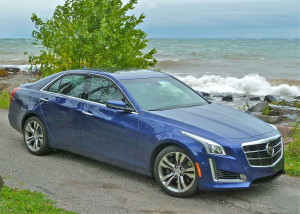
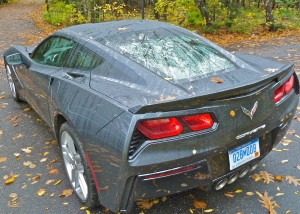
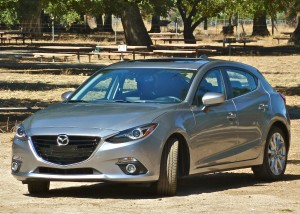
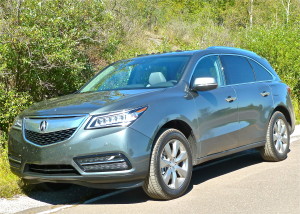
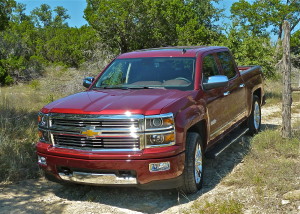
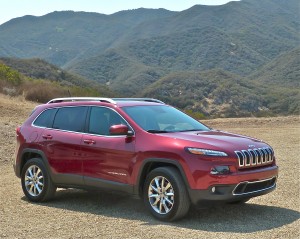
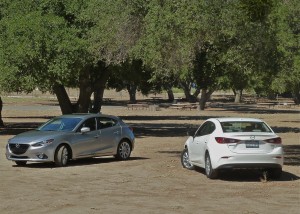

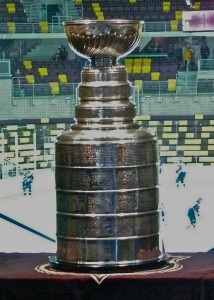
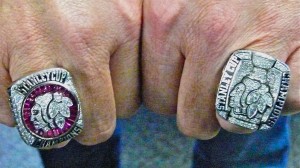
 John Gilbert is a lifetime Minnesotan and career journalist, specializing in cars and sports during and since spending 30 years at the Minneapolis Tribune, now the Star Tribune. More recently, he has continued translating the high-tech world of autos and sharing his passionate insights as a freelance writer/photographer/broadcaster. A member of the prestigious North American Car and Truck of the Year jury since 1993. John can be heard Monday-Friday from 9-11am on 610 KDAL(www.kdal610.com) on the "John Gilbert Show," and writes a column in the Duluth Reader.
John Gilbert is a lifetime Minnesotan and career journalist, specializing in cars and sports during and since spending 30 years at the Minneapolis Tribune, now the Star Tribune. More recently, he has continued translating the high-tech world of autos and sharing his passionate insights as a freelance writer/photographer/broadcaster. A member of the prestigious North American Car and Truck of the Year jury since 1993. John can be heard Monday-Friday from 9-11am on 610 KDAL(www.kdal610.com) on the "John Gilbert Show," and writes a column in the Duluth Reader.